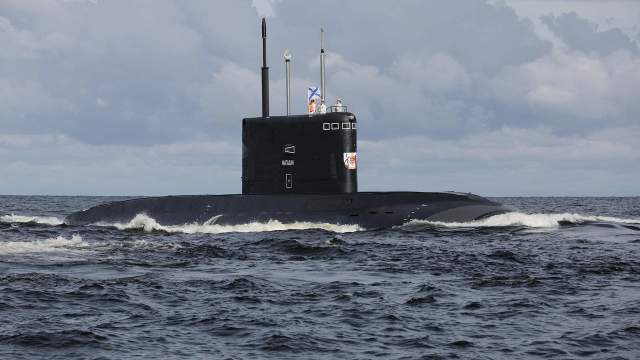The diesel-electric boat of project 636.3 took part in exercises that have not been held on the Northern Sea Route for several decadesThe underwater "black holes" — as the diesel submarines of Project 636.3 are called in the navy — have been tested on the Northern Sea Route (NSR).
The Ministry of Defense conducted a test of these submarines in Arctic conditions. During the maneuvers, the unique submarines trained to fight both underwater and surface targets. In particular, launches of Kalibr cruise missiles were carried out. Now submarines of this series will be able to successfully cover the NSR. According to experts, such maneuvers in the northern seas have not been carried out for many decades. The details of the tests are in the material of Izvestia.
Tested by the Arctic
As sources in the military department told Izvestia, currently the submarines of Project 636.3 are recognized as suitable for operations in the Arctic, including on the Northern Sea Route. The decision was made at the end of autumn this year — after analyzing the results of the actions of the submarine of this series in the north-east of Russia. The inspection took place within the framework of the integrated Arctic expedition "Umka-2022".
In September, following the results of the exercises, the Ministry of Defense reported that during the Umka-2022 expedition, submarines with cruise missiles Omsk and Novosibirsk of the Pacific Fleet (TOF), while on the surface, launched anti-ship cruise missiles Granite and Onyx from the waters of the Chukchi Sea.
In recent years, the Ministry of Defense has already held several such events. So, the forces and means of the Northern Fleet took part in last year's expedition. This year, the actions in the north-eastern Arctic regions were practiced by the military personnel of the Pacific Fleet. The submarine "Magadan" also participated in the tests.
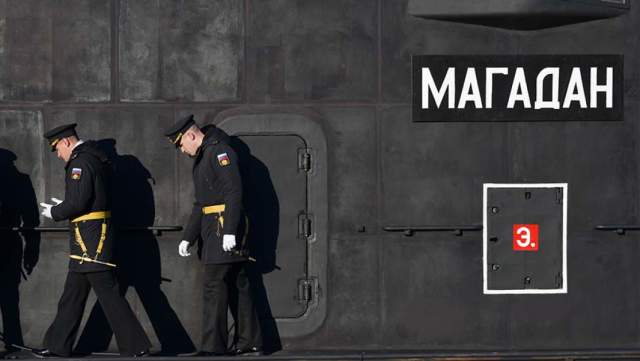
Servicemen of the Russian Navy on a diesel-electric submarine of project 636.3 "Magadan"
Image source: Photo: RIA Novosti/Alexander Galperin
"Magadan" was transferred to the fleet in October last year. Over the past time, the crew mastered their tasks, conducted tests, and as a result, the boat passed the Northern Sea Route to the Pacific Ocean. In this campaign, the ship performed combat training tasks in the polar latitudes
Initially, the 636-series ships were developed for export to the countries of the Warsaw Pact Organization. Since the second half of the 1990s, boats for China, Algeria and Vietnam have been built according to the project and its modifications. Then it was decided to purchase such submarines for the Russian fleet. They are created according to the upgraded version 636.3. From the basic version, these boats are distinguished by better running characteristics, a reduced noise level, the presence of an automated control system, a modern navigation system.
The Road of Life
— The last time diesel-electric submarines crossed the Northern Sea Route in the 50s of the last century, - military historian Dmitry Boltenkov told Izvestia. — It was a difficult transition — a large detachment of ships was transferred, some of the boats were stuck. And now, for the first time in many decades, a diesel-electric submarine has made the transition through the NSR to the Pacific Fleet.
This is a significant event. Neither in the 1980s, nor in the 1990s, nor in recent decades, such ships did not go by the Northern Sea Route - only nuclear submarines did it. And during the transition, the submarine solved certain tasks related to the Umka-22 exercises that took place in the Arctic. At the same time, the ship was tested in the northern seas. Now, if necessary, the boats of this project will be able to operate in the Arctic — for example, patrol the Northern Sea Route, conduct reconnaissance, the expert added.
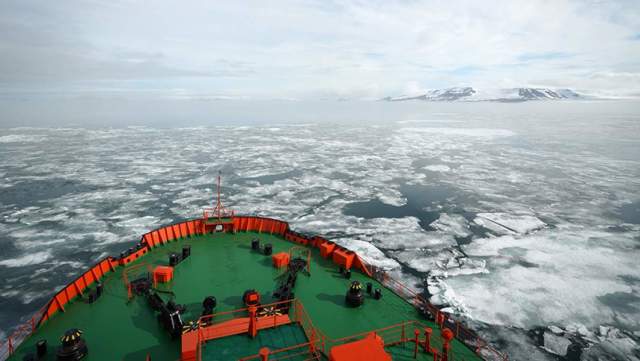
Photo: IZVESTIA/Pavel Volkov
Image source: iz.ru
Recently, Russia has been actively building infrastructure in the Arctic and deploying forces to cover the Northern Sea Route. The joint strategic command "Northern Fleet" was created, equal in status to the military district. Coastal missile systems "Bal" and "Bastion", air defense systems are located on the Arctic islands. The polar airfields have been reconstructed, fighters are serving on them. In addition, the transfer of forces to the Arctic from other regions, both land and sea, is regularly practiced. Last year, a detachment of ships of the Northern Fleet trained amphibious landings along the Northern Sea Route during maneuvers. In different areas, the polar shores were stormed by units of marines and Arctic motorized infantry.
— The Northern Sea Route historically belongs to Russia, — Sergey Ordzhonikidze, former Deputy Secretary General of the United Nations, reminded Izvestia. — Earlier it was disputed, but not in an aggressive form, but in political and legal. And now it is being challenged in an aggressive form. And in order for aggressive claims not to come true, we need to assert our presence in the Arctic. And besides, the Northern Sea Route leads from Europe to the Far East and Southeast Asia, so its importance can hardly be overestimated. I think that as the world gradually warms, more and more opportunities will open up for the use of the Northern Sea Route.
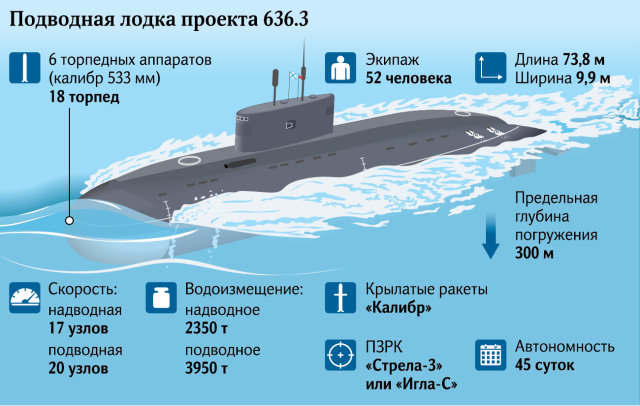 |
| Diesel submarines of project 636.3. |
| Source: iz.ru |
Invisible and silent
The submarines of Project 636.3 are considered one of the most silent in the world, for which they were nicknamed black holes in the navy. These submarines are capable of performing a wide range of tasks — destroying surface and underwater targets, conducting patrols or reconnaissance.
The first series of six submarines of Project 636.3 was built from 2014 to 2016, all of these ships were sent to serve in the Black Sea. In September 2016, a contract was signed for six more submarines for the Pacific Fleet. At the moment, three ships of the series have been built. Petropavlovsk-Kamchatsky was transferred to the fleet in 2019, Volkhov — in 2020, and last year the Magadan boat joined the Navy.
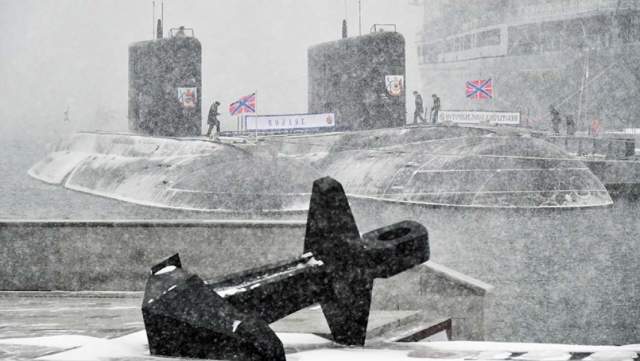
Submarines of Project 636.3 "Petropavlovsk-Kamchatsky" and "Volkhov" from the squadron of ships of the Pacific Fleet (Pacific Fleet) at the 33rd berth of the Primorsky Flotilla of heterogeneous forces
Image source: Photo: TASS/Yuri Smityuk
Submarines of project 636.3 have a displacement of over 3.9 thousand tons, a length of 74 m, a speed of up to 20 knots. They can be continuously at sea for up to 45 days. It carries six 533-mm torpedo tubes on board, can use torpedoes and mines, as well as Kalibr-PL cruise missiles.
The Pacific Fleet in the post-Soviet years remained without attention for a long time. The new ships went mainly to the Arctic, the Baltic and the Black Sea. However, in recent years, the Russian Defense Ministry has seriously taken up updating the ship's composition of the Pacific Fleet. At the end of 2020, it included the Gremyashchy corvette, the lead ship of Project 20385, capable of using Kalibr and Onyx missiles. At the same time, the corvette of project 20380 "Hero of the Russian Federation Aldar Tsydenzhapov" entered service. The deep modernization of the large anti-submarine ship Marshal Shaposhnikov was also completed. After installing anti-ship and cruise missiles and strengthening air defense, the former anti-submarine ship changed its specialization and was reclassified into a frigate. In addition, a new base minesweeper "Yakov Balyaev" entered the TOPA in 2020.
Roman Kretsul
